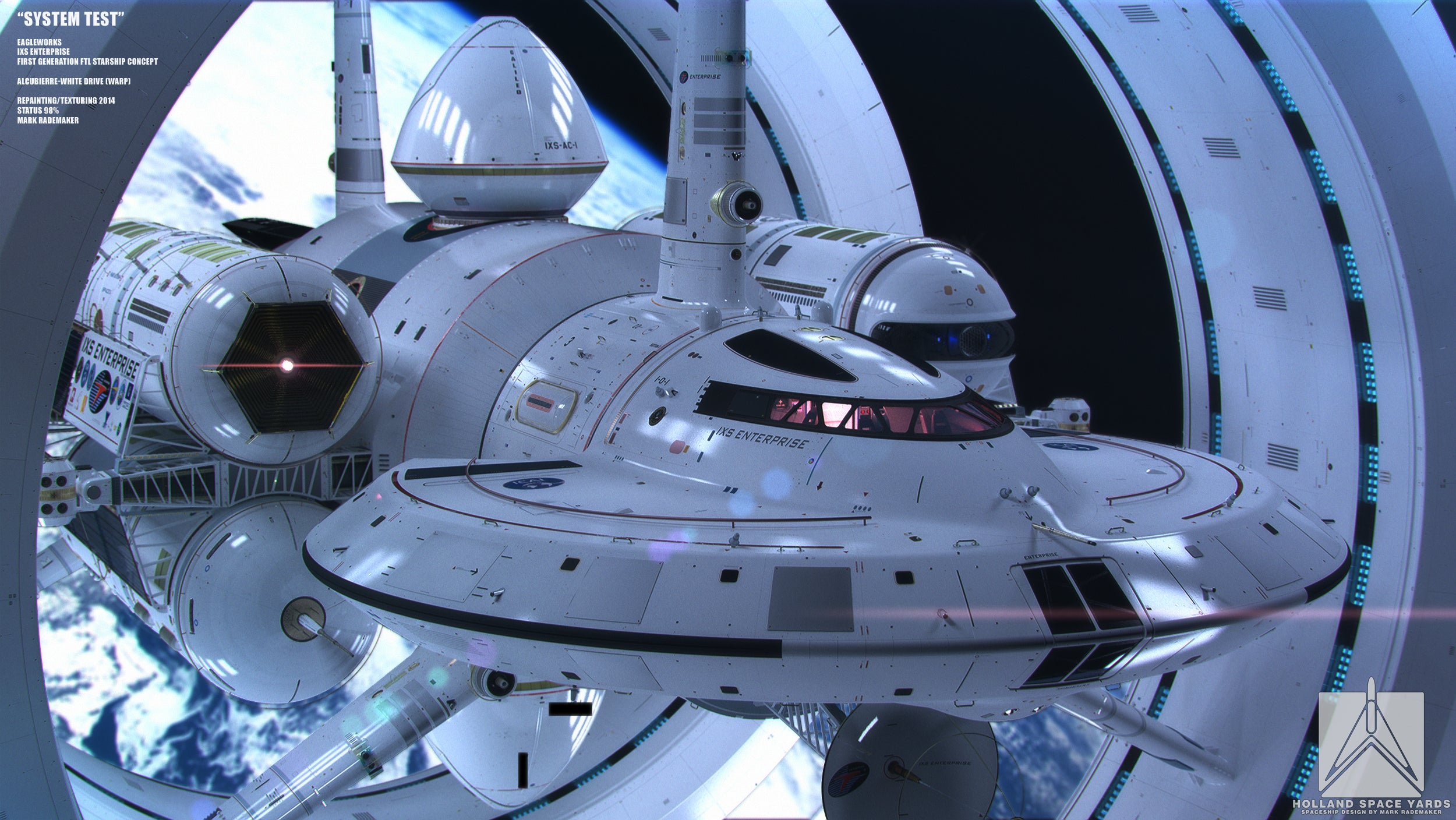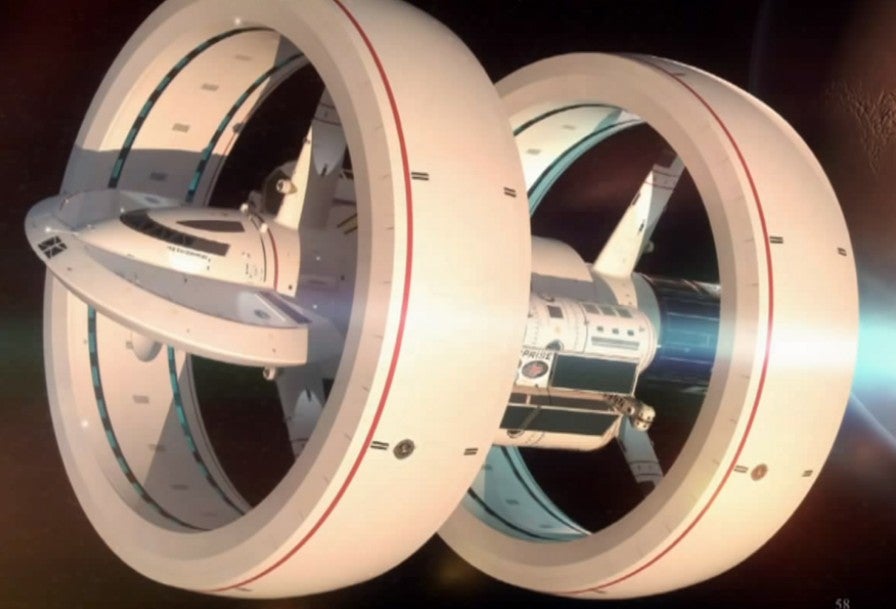Nasa publishes faster-than-light spaceship design to imagine interstellar exploration
New concept images show a spacecraft with a warp drive that could travel to our nearest star in 4 weeks - current ships would take 80,000 years

Believe it or not, Nasa is serious about creating faster than light travel, and have released a new batch of concept images (see gallery below) showing exactly what a spacecraft equipped with a star-hopping warp drive might look like.
Created in collaboration between Dutch artist Mark Rademaker and Nasa physicist Dr Harold White, the illustrations show a craft powered by an Alcubierre Drive – a hypothetical engine that was first suggested in 1994 as a way of achieving faster than light speeds.
Alcubierre’s device worked by distorting space-time, expanding the space behind a ship and contracting the space in front of it to create a ‘warp bubble’ that essentially moves space and time around the object, rather than actually accelerating the craft to impossible speeds.
For all its craziness, physicists conceded that such a warp drive might be theoretically possible but that it would require staggering amounts of power – something equivalent to the mass-energy of Jupiter, a planet 317 times the mass of the Earth.
However, in 2012, Dr White announced that he had managed to finesse Alcubierre’s original plans to reduce the amount of mass-energy needed from that of a gas giant to a spacecraft the size of the Voyager 1 – and, even more surprisingly, that he was working with a team from Nasa to further develop his ideas.
Unfortunately none of this really brings the idea of a working Alcubierre Drive any closer, not least because the design rests on being able to use something called ‘exotic matter’ as fuel.
This is a hypothetical substance that physicists suggest might have negative mass. In terms of discovering it the best we can say is that we haven’t found a way to rule out its existence and when we compare it to dark matter – another scientific oddity that we’re pretty sure actually exists but that we’ve never directly seen, let alone created - the chances of using exotic matter are slim to none.

This all means that even Dr White – one of the most optimistic scientists when it comes to the warp drive – will only comment on the possibility of faster than light travel by saying “the field equations predict that this is possible, but it remains to be seen if we could ever reduce this to practice."
Nevertheless, it seems that Nasa is happy to fuel people's imaginations instead, and looking at the concept images it's impossible not join in - and hope a little.
With such a spacecraft humanity could travel to nearby stars in just weeks (with current propulsion techology it would take 80,000 years) making it possible to explore entirely new worlds and even contact alien life. We may never create such a craft for many generations - but that doesn't mean we shouldn't dream.
Join our commenting forum
Join thought-provoking conversations, follow other Independent readers and see their replies
Comments
Bookmark popover
Removed from bookmarks